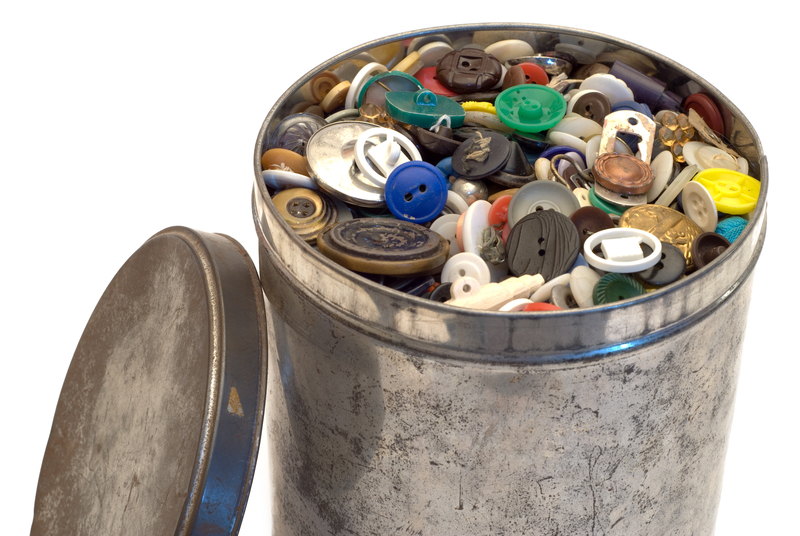Innovative Techniques to Recycle Your Old Apparel
With environmental concerns mounting and fast fashion trends dominating the global market, finding sustainable methods to recycle your old apparel is more important than ever. Breathing new life into your clothing extends its lifespan and contributes to a greener planet. In this comprehensive guide, uncover the most innovative and creative ways to recycle old apparel, ensuring your wardrobe doesn't end up in the landfill.

Understanding the Importance of Recycling Old Apparel
The fashion industry is infamous for its massive environmental footprint, from water consumption to textile waste. Each year, billions of pounds of clothing are discarded. By embracing modern recycling techniques for your clothing, you play a crucial part in reducing waste, conserving resources, and promoting a circular economy for fashion.
Why Should You Recycle Your Clothing?
- Reduces landfill waste and pollution
- Minimizes the need for raw materials
- Offers cost savings and possible income
- Supports creative and local recycling initiatives
- Encourages you to be a conscious consumer
The Most Innovative Ways to Recycle Your Old Clothes
1. Upcycling: Turning Old Apparel Into Trendy Pieces
Upcycling is the process of creatively transforming worn-out garments into new items of higher value or utility. Instead of discarding faded t-shirts or torn jeans, upcycling breathes new life and style into your wardrobe.
- DIY Fashion: Convert oversized shirts into fashionable crop tops, or turn ripped jeans into retro shorts.
- Patchworking: Create unique designs by sewing fabric patches onto jackets or pants.
- Accessory Creation: Make headbands, tote bags, or even jewelry from fabric scraps.
- Embroidery & Painting: Personalize plain clothes using embroidery threads or fabric paints for a one-of-a-kind look.
Upcycling not only recovers value from unwanted garments but also fosters creativity and a sense of sustainable fashion.
2. Clothing Swap Events: Extending Lifecycle Through Exchange
Organizing or participating in a clothing swap is a social and eco-friendly method to recycle old garments. Invite friends, family, or community members to exchange clothing they no longer wear.
- Refresh your wardrobe without buying new clothes
- Reduce textile waste by giving unwanted clothing a second life
- Build a strong community bond through sustainability
Clothing swaps promote mindful consumption and demonstrate that style can be sustainable, accessible, and fun.
3. Textile Recycling Programs: Professional Repurposing
Many fashion brands and organizations offer textile recycling programs that process old clothing for reuse or re-production. These initiatives utilize advanced technologies to recover fibers, fabrics, and materials from discarded apparel, transforming them into raw resources for new garments or industrial products.
- Retailers like H&M, Levi's, and The North Face accept used clothes for recycling in-store
- Textile banks and curbside collection bins are available in many cities
- Innovative recycling centers convert textiles into fibers for insulation, cleaning materials, or industrial rags
Tip: Always check clothing's material label before recycling. Synthetic fibers may require specialized processing compared to natural materials like cotton or wool.
4. Creative DIY Home Projects with Old Clothes
Transforming outdated apparel into functional or decorative home items is a practical way to recycle clothes at home. Use your creativity to design unique crafts that personalize your living space.
- Rag Rugs: Weave strips of fabric into colorful floor mats or area rugs
- Pillow Covers: Repurpose t-shirts or sweaters as cozy cushion covers
- Quilts and Blankets: Collect beloved fabric pieces to stitch an upcycled patchwork quilt
- Storage Solutions: Sew bags, baskets, or boxes from sturdy denim or canvas
These DIY recycling techniques not only extend the life of textiles but also add character and eco-conscious flair to your home.
5. Composting Natural Fabrics: Returning to Nature
Did you know that natural fibers like cotton, wool, and linen are biodegradable? Composting apparel made from these materials provides a truly eco-friendly method to dispose of worn-out clothes.
- Remove synthetic parts such as buttons, zippers, and labels
- Shred fabrics into smaller pieces to accelerate decomposition
- Add the fabric scraps to your compost bin and mix with organic waste
- Use resulting compost to enrich your garden soil
Note: Avoid composting synthetic fabrics like polyester or blends that contain non-biodegradable fibers.
6. Partnering with Local Artisans and Upcycle Designers
Support the creative community by donating your old clothes to local artisans or upcycle designers. They often seek unique fabrics and textures for their projects and can transform your pre-loved garments into wearable art or home decor.
- Check local classifieds or community boards for upcycle artists and crafters
- Attend craft fairs or markets showcasing recycled apparel
- Collaborate for custom pieces that celebrate the spirit of sustainability
By recycling and collaborating, you contribute to the growth of a creative and eco-conscious fashion ecosystem.
7. Using Clothing Donation Services Thoughtfully
While donation is a common method to recycle old clothing, it's crucial to do it responsibly. Not all clothing donations end up being reused; some are downcycled or exported, which may not always be the best for the environment.
- Donate clean and wearable clothing to reputable organizations or local shelters
- Contact charities about their textile recycling policies
- Consider niche donation drives for specific clothing items (e.g., professional outfits for job seekers)
Responsible donation ensures your contribution genuinely benefits the community and the environment.
Advanced Fabric-to-Fabric Recycling: The Future of Fashion Sustainability
New technologies are revolutionizing how we recycle old apparel by breaking down fibers and regenerating new high-quality textiles. This approach, known as fiber-to-fiber recycling or closed-loop recycling, is gaining global momentum.
How Does Advanced Apparel Recycling Work?
Innovative recycling facilities use mechanical or chemical processes to separate and purify fibers from old garments, allowing them to be spun into new yarns. This enables the creation of new clothes with minimal resource extraction and environmental impact.
- Mechanical recycling: Shreds textiles into fibers, suitable for low-grade products like insulation or yarn
- Chemical recycling: Breaks down fibers at the molecular level, regenerating high-quality fabric for new apparel
Clothing brands are now investing in reverse logistics, encouraging consumers to return old clothes for recycling in exchange for rewards or discounts. These programs promote a more circular and innovative apparel industry.
Emerging Trends in Recycling Old Fashion Items
Fashion Rental Services & Shared Wardrobes
Renting clothes for special occasions or everyday wear reduces the number of new items manufactured annually. Users can enjoy current trends while returning clothing for professional cleaning and reuse.
- Participate in local or online clothing rental platforms
- Swap formal attire and seasonal wear for events
This innovative approach not only recycles apparel but also empowers more sustainable fashion habits.
Digitizing Your Closet with Re-commerce Apps
Specialized apps enable users to sell, trade, or gift their unwanted clothing online. By digitizing your wardrobe, you can recycle clothes conveniently and reach a larger audience.
- List items on peer-to-peer clothing resale apps like Depop, Poshmark, or Vinted
- Host virtual garage sales or join local online swap groups
- Utilize condition, material, and brand filters to attract eco-conscious buyers
Digital re-commerce platforms reduce textile waste and encourage a more circular clothing economy.

Best Practices for a Sustainable Wardrobe
How to Maintain and Extend the Life of Your Clothing
Before your apparel ever reaches the recycling stage, simple maintenance can significantly prolong its usefulness.
- Wash clothing in cold water and avoid harsh detergents
- Repair minor rips, missing buttons, or broken zippers promptly
- Store seasonal clothing properly to prevent damage
- Invest in timeless, high-quality pieces that outlast fleeting trends
A thoughtful approach to garment care aligns with the overall mission of reducing waste and maximizing apparel longevity.
Conclusion: Embrace Innovative Recycling for Your Old Apparel
Recycling your old apparel is no longer limited to simple donation bins or passing clothes to friends. From high-tech textile recycling plants to creative DIY projects and digital clothing swaps, innovative techniques for recycling old apparel are evolving to meet society's ecological demands.
Whether you upcycle, compost, donate, or support advanced fiber-to-fiber recycling, your conscious choices play a key role in shaping a more sustainable fashion future. Next time you clear out your closet, consider these inventive and environmentally friendly options to recycle your old clothes. Share your creations, inspire others, and help pave the way for a fashion industry that values the planet as much as it does style.
Remember: Every garment recycled is a step closer to a greener future. Start today and make your old apparel part of the sustainability revolution!